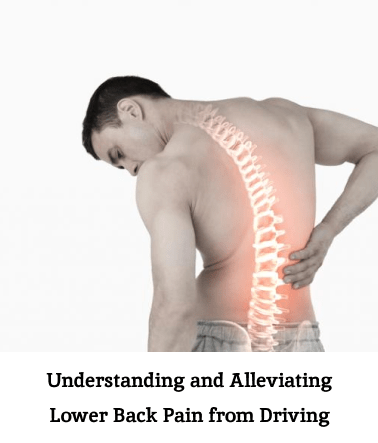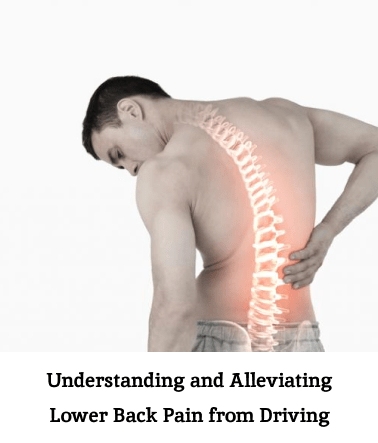Alleviating Lower Back Pain from Driving

Long hours behind the wheel can be strenuous, often leading to discomfort and persistent lower back pain. Driving for extended periods causes strain on the lower back muscles, contributing to discomfort, stiffness, and even chronic pain. As experts in alleviating such issues, we aim to provide comprehensive insights and effective tips to minimize and prevent lower back pain during prolonged drives.
Importance of Addressing Lower Back Pain from Driving
Understanding the Impact
The repercussions of prolonged driving sessions on the lower back cannot be understated. Sitting in a fixed position for an extended period causes strain on the lumbar spine, affecting the discs, muscles, and nerves in the lower back region. Ignoring these discomforts can lead to chronic issues, affecting overall well-being and impeding daily activities.
Ergonomic Considerations: Optimizing Your Driving Posture
Maintaining Proper Posture
To mitigate the risk of lower back pain, adopting the correct driving posture is pivotal. Ensure the driver’s seat is adjusted to provide adequate lumbar support. Sit upright with your back against the seat to maintain the natural curvature of the spine, distributing the pressure evenly and minimizing strain on the lower back.
Strategies for Comfortable Long Drives
Take Frequent Breaks
Implementing regular breaks during extended drives is fundamental. Every two hours, schedule short breaks to stretch and walk around. Engage in simple stretching exercises that focus on the back, hamstrings, and hip flexors. These pauses alleviate muscle tension, enhance blood circulation, and reduce the likelihood of lower back discomfort.
Utilizing Supportive Accessories
Invest in Lumbar Support
Consider using supportive accessories like lumbar pillows or cushions specifically designed to provide additional support to the lower back. These aids help maintain proper spinal alignment, diminish strain on the muscles, and reduce the risk of discomfort during lengthy drives.
Adjusting Vehicle Settings for Optimal Comfort
Modify Seat Settings
Customize your car’s seat settings to suit your ergonomic needs. Adjust the seat height, distance from the pedals, and steering wheel position to maintain a relaxed and comfortable driving posture. Creating a setup that aligns with your body’s natural contours minimizes strain on the lower back.
Stress Reduction Techniques for a Relaxed Drive
Practice Relaxation Methods
Incorporate stress-relieving techniques to enhance relaxation while driving. Utilize deep breathing exercises or listen to calming music or audiobooks. Such practices promote a calm mindset, reducing tension in the muscles, and alleviating lower back discomfort.
Conclusion
Prioritize Your Well-being
Addressing lower back pain caused by long drives necessitates a proactive approach. By adopting ergonomic driving habits, integrating regular breaks, utilizing supportive accessories, and practicing relaxation techniques, individuals can significantly diminish discomfort and prevent the long-term issues associated with prolonged driving.
